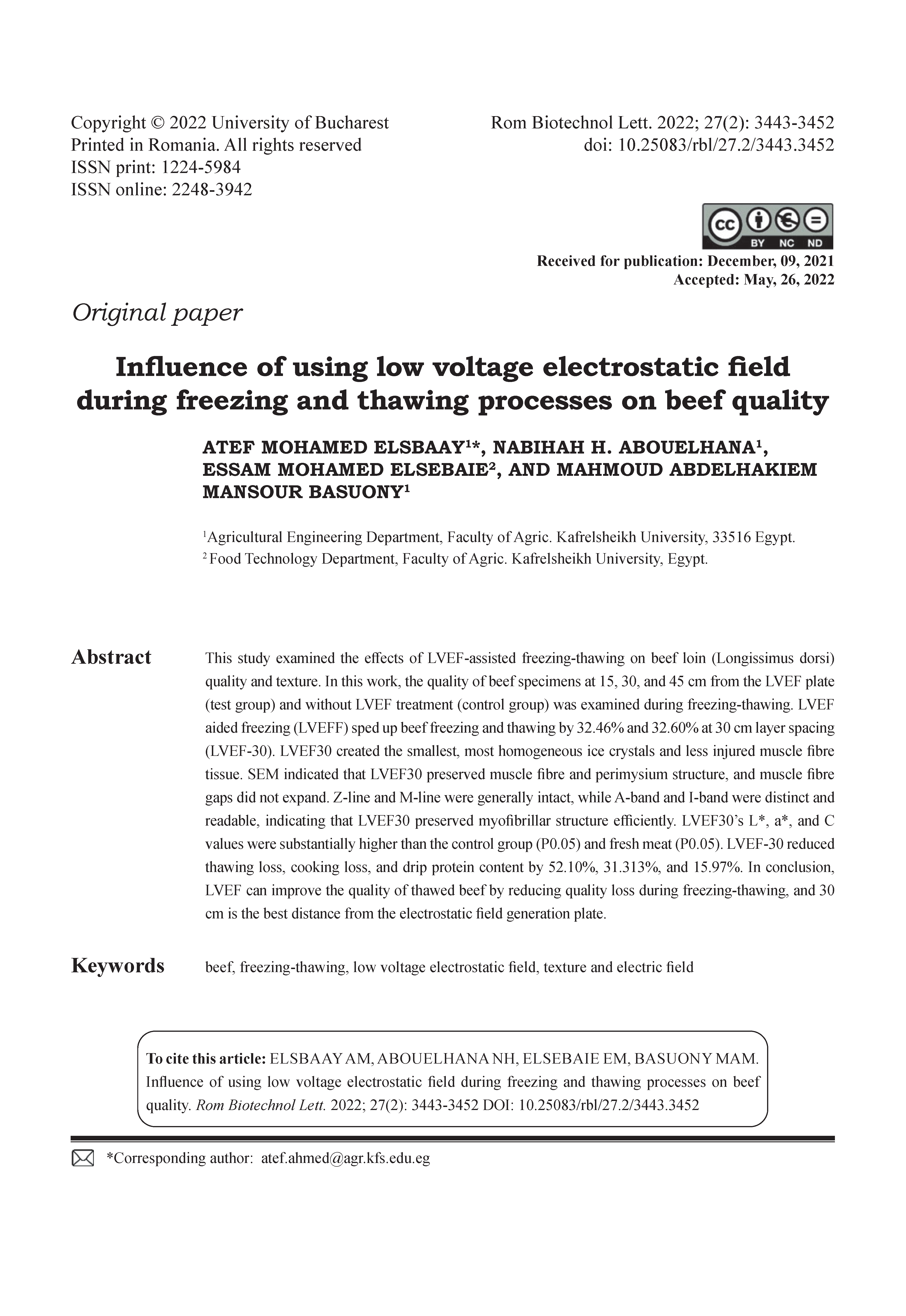Influence of using low voltage electrostatic field during freezing and thawing processes on beef quality
DOI:
https://doi.org/10.25083/rbl/27.2/3443.3452Keywords:
beefAbstract
This study examined the effects of LVEF-assisted freezing-thawing on beef loin (Longissimus dorsi) quality and texture. In this work, the quality of beef specimens at 15, 30, and 45 cm from the LVEF plate (test group) and without LVEF treatment (control group) was examined during freezing-thawing. LVEF aided freezing (LVEFF) sped up beef freezing and thawing by 32.46% and 32.60% at 30 cm layer spacing (LVEF-30). LVEF30 created the smallest, most homogeneous ice crystals and less injured muscle fibre tissue. SEM indicated that LVEF30 preserved muscle fibre and perimysium structure, and muscle fibre gaps did not expand. Z-line and M-line were generally intact, while A-band and I-band were distinct and readable, indicating that LVEF30 preserved myofibrillar structure effciently. LVEF30’s L*, a*, and C values were substantially higher than the control group (P0.05) and fresh meat (P0.05). LVEF-30 reduced thawing loss, cooking loss, and drip protein content by 52.10%, 31.313%, and 15.97%. In conclusion, LVEF can improve the quality of thawed beef by reducing quality loss during freezing-thawing, and 30 cm is the best distance from the electrostatic field generation plate.





